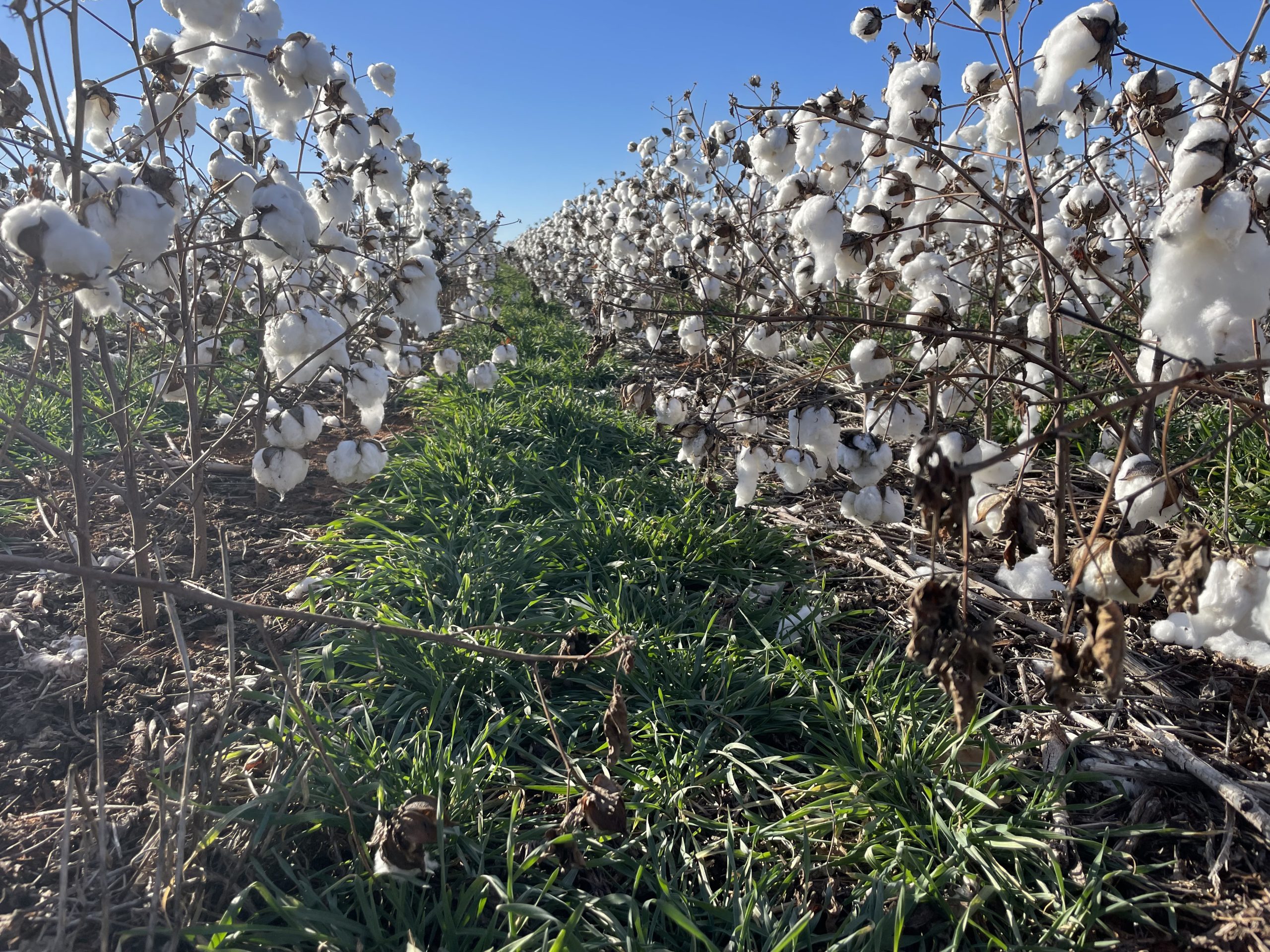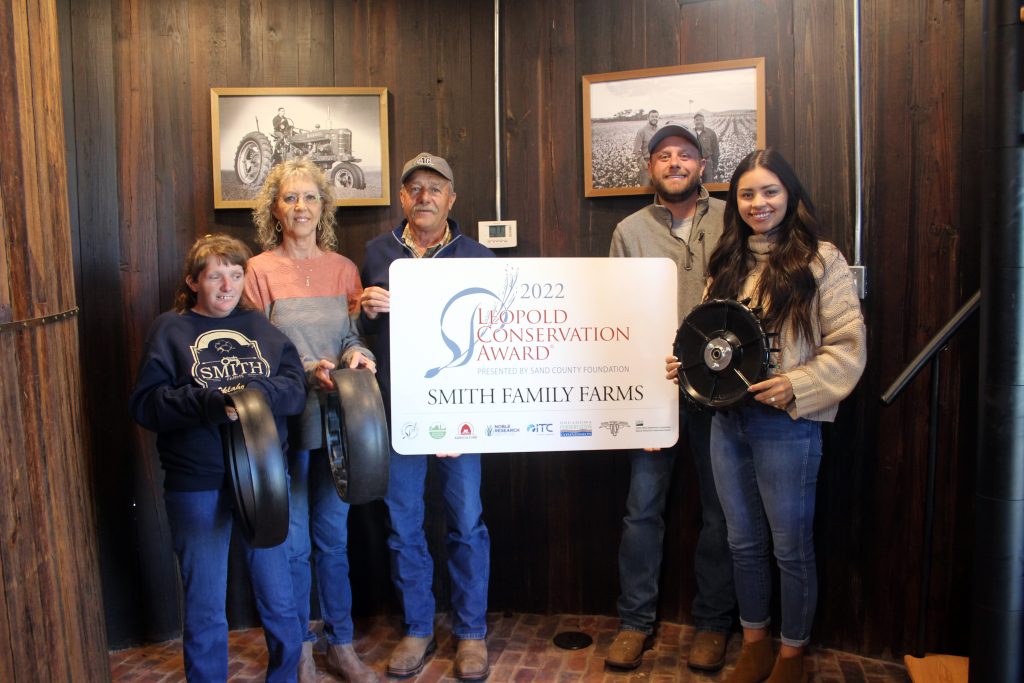
It was dry as a bone outside and the wind speed was sustained at 23 miles per hour with sporadic gusts reaching 40 mph when Jimmy and Spencer Smith, cotton growers from Elk City, Oklahoma, sat down for an interview with High Plains Journal. On days like this, the farmers who implement good conservation practices easily sort themselves from the rest of the pack because their fields are the only ones that are not blowing. The Smith’s land stayed put that day and with the strategies and conservation principles this father-son duo employs, it is safe to say their topsoil will be here for years to come.
Smith Family Farms dates back to 1913, when Jimmy’s great grandparents started the farm that is now being worked by its fourth and fifth generations. Jimmy decided to return to the farm in 1978 and has been farming full-time ever since. Spencer came back to farm full-time in 2011, which was a challenging year due to the historic drought. Jimmy said his father raised 500 to 600 acres of cotton when he was running the farm, but now Jimmy and Spencer grow roughly 2,000 acres of dryland cotton, harvest enough rye to use as cover crop seed and have a small cow-calf herd.
“Anytime you plow that ground, that moisture disappears. We hear a lot of things like cover crops take all the moisture out of the soil, but it doesn’t as long as you terminated it at the right time.”
—Jimmy Smith
Conservation and innovation have been running themes throughout all five generations of Smith Family Farms. Long before planting cover crops was a common soil health practice, Jimmy’s father and grandfather were broadcasting rye seed into their cotton to prevent soil erosion. The Smith family used conventional tillage until 1998 when Round-Up Ready cotton was released. Jimmy started strip-tilling between the rows at that point but was still broadcasting rye as a cover crop.
“We did that for several years and we were going to all these meetings on soil health and we started learning about different conservation practices,” Jimmy said. “We wondered why the heck we were plowing this stuff up every year. So, we quit and went to no-till.”
The change increased the number of acres the Smiths could farm and boosted their organic matter and water retention among other benefits. The Smith family’s dedication to soil conservation was acknowledged this year when they were presented with the 2022 Leopold Conservation Award by the Sand County Foundation. This award is given to recognize agriculturists for their achievements in voluntary conservation.
“I’ve been on the district conservation board for 20 some years now and I’ve seen it given all the time to different individuals, but I never really thought we’d receive it,” Jimmy said. “We were shocked. It was a great honor and I think we owe a lot to my dad and my granddad for starting a lot of these practices years ago.”
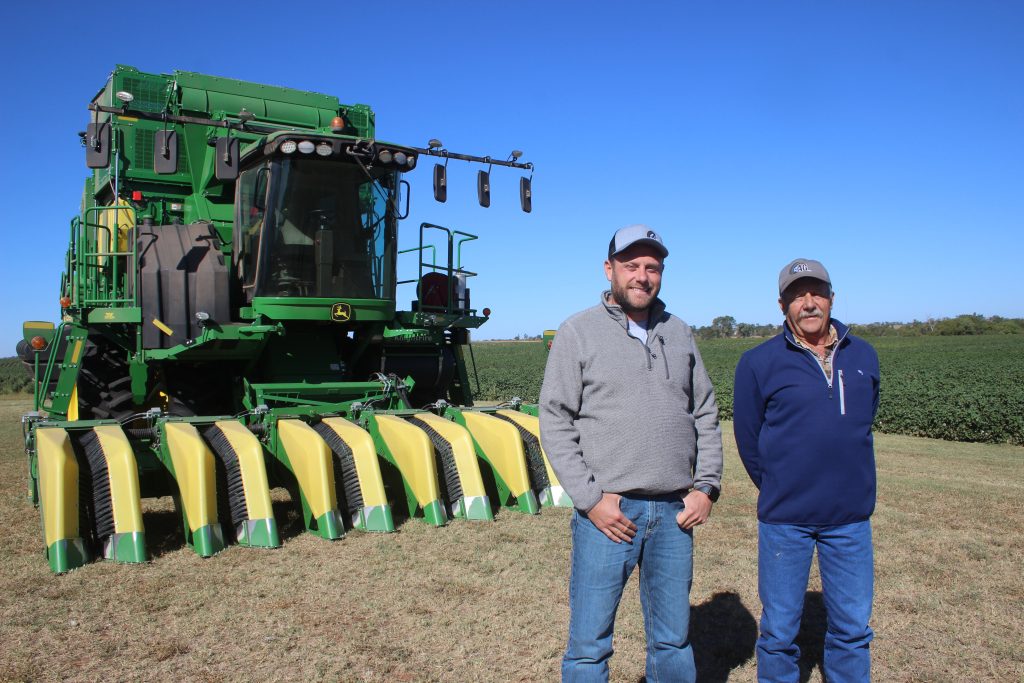
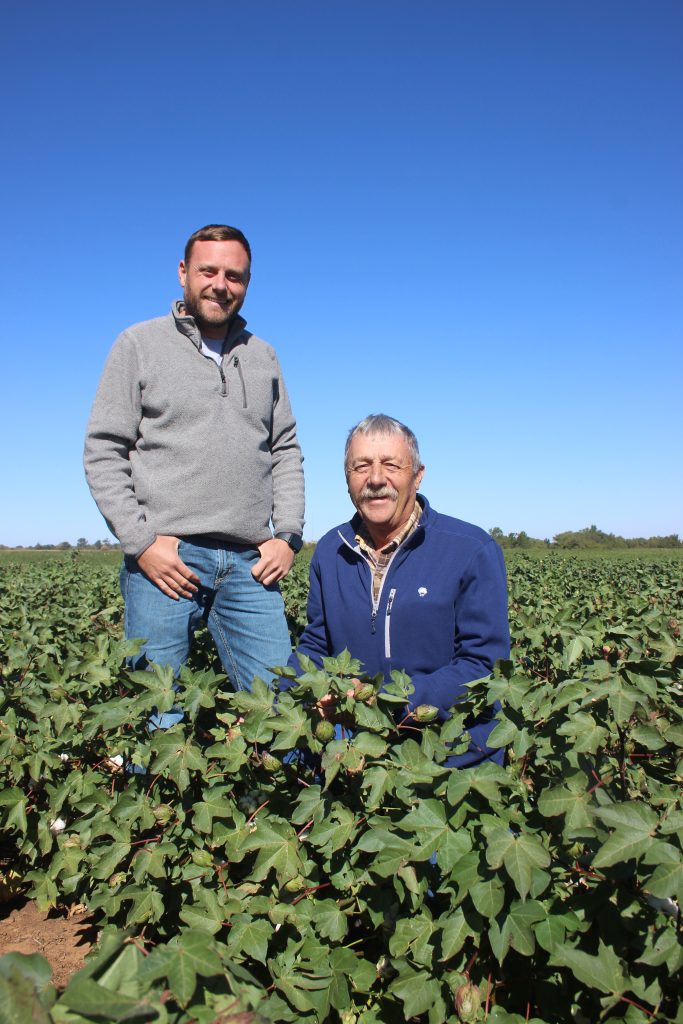
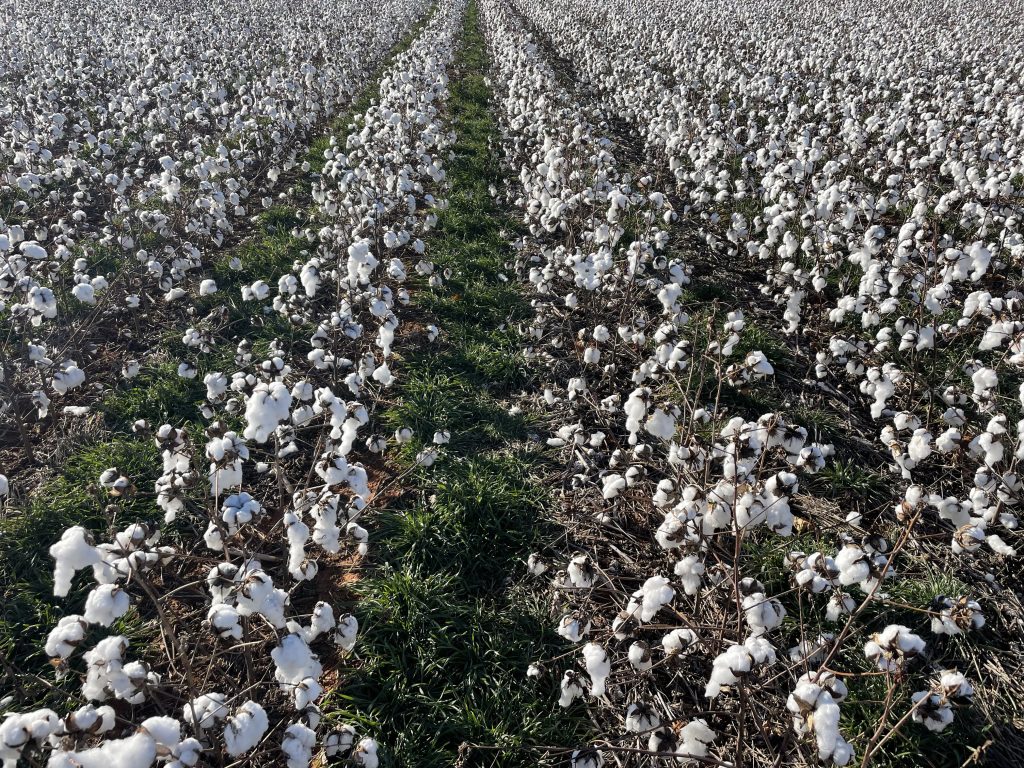
Problem solvers
Jimmy and Spencer Smith, cotton growers from Elk City, Oklahoma, are the fourth and fifth generations to farm their family’s land. Over the years they have found sometimes it’s easier to develop the products they need than try to find it in the marketplace.

The 3-inch gauge wheel tire. (Journal photo by Lacey Vilhauer.)
Since the Smiths practice no-till, they plant back into the same row each year and a problem they were encountering was stubble and stalks in the field poking holes in their planter gauge wheel tires. Spencer said they were replacing the wheels every year and in some farming conditions they might have to change them twice a year. To come up with a solution, they tried a different material with another company and those tires actually ended up with less life on the part.
“So, we decided to start building our own,” Spencer said. “We came up with a solid polyamide-type material and it’s tough enough to stand up to stumble. We saw a problem and wanted to fix the issue. We’re still running the same tires on our gauge wheels since 2012.”

The 4.5-inch gauge wheel tire. (Journal photo by Lacey Vilhauer.)
Although they had not planned to make a business out of their problem-solving venture, before long neighbors were asking if they could purchase the tires and in 2017, Jimmy, Spencer, fellow farmer Danny Davis and machinist Jake Hunter, launched 4 AG Mfg.
By 2018 they had developed a mold for the tires and started selling them for no-till planters and air seeders. The Smiths are proud that the products are 100% made in Oklahoma and are being purchased around the world. Spencer said they started with a four-and-a-half-inch tire, but now offer three-inch tires and a fully assembled no-till closing wheel as well. The tires are available in new style and old style.
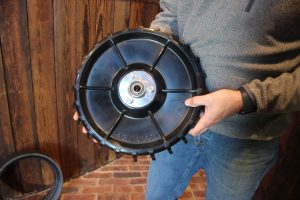
The 4 Ag closing wheel was designed to increase emergence by improving seed to soil contact. (Journal photo by Lacey Vilhauer.)
Another market the Smiths are looking into is building interseeding drills, and this notion was also developed from a dilemma the Smiths were experiencing. Jimmy said years ago he would broadcast rye in his fields and the stands were never uniform.
“You’d have a plant here and a plant there and some of them would be in the row of cotton,” Jimmy said. “Using a no-till system, we’d go to planting cotton, and the planter would run over a rye plant and the gauge wheels would bounce over it and that would change the depth of your seed. So that’s when we started using interseeding drills.”
Back in the 1970s Jimmy could not find an interseeding drill, so of course he built one himself. The original implement was a four-row drill because they were still broadcasting rye. Eventually they went to a six-row drills. By 2019, the Smiths wanted to upgrade to a 12-row drill, but COVID-19 put a wrench in the works when steel prices went through the roof. But by the end of 2021 Spencer started sourcing materials and in 2022 they started building the upgraded drills.
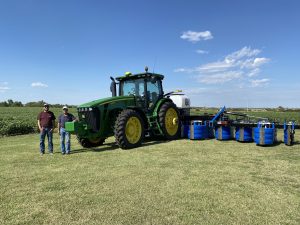
Spencer and Jimmy Smith pose with their tractor and 12-row interseeding drill they built. (Courtesy photo.)
“If a guy wants to go buy one, you can’t find it,” Spencer explained. “We know because we tried. We contacted multiple manufacturers to work with us all the way from Oklahoma to Minnesota and didn’t have any luck. And so that’s when we decided to just build it ourselves.”
The Smiths tested the new drill in 2023 and had great success. In fact, they have plans to build another set of drills for a fellow farmer this winter and there could be more custom-built drills in their future.
“We’re just going to go with it and see if this turns into a business,” Spencer said. “There’s got to be other farmers out there that want one. It was a lot of work to get to that point, but I feel we feel confident that we can build them for other people.”
Tangible improvements
The Smiths notice measurable differences in their farms with the use of regenerative tools. Jimmy said after cotton harvest, they will sometimes get flash flooding conditions and with all the terraced ground in Western Oklahoma, water can be seen running out the terrace channels. Jimmy said the difference he sees between his land and his neighbors that use conventional tillage, is that their water is red, but his water is clear because he is not losing soil or nutrients when heavy rain falls.
No-till practices and cover crops have often been the saving grace for Smith Family Farms. This year large amounts of rain fell in late spring and early summer, delaying cotton planting. Jimmy said one particular field was planted June 17, and in the next 30 days they received 12 inches of rain—unfavorable conditions for cotton. Then it became extremely hot, dry and windy. They had almost given up on the crop, but after a timely rain in August, the cotton bounced back with impressive resiliency.
“I don’t know of anybody this year that uses conventional farming that has any crop to harvest,” Jimmy said. “They’ve already disastered it all out. Anytime you plow that ground, that moisture disappears. We hear a lot of things like cover crops take all the moisture out of the soil, but it doesn’t as long as you terminated it at the right time.”
The most satisfying reinforcement of all is that Jimmy and Spencer can walk out to a cotton field after a rain, dig into the stubble and find earthworms. That is the ultimate indication of healthy soil.
Jimmy and Spencer said one lesson they have learned over the years is to not to be afraid to try something new on a small scale and have patience with regenerative practices. Incorporating no-till and planting cover crops will not make a difference in one year’s time. It takes years for these practices to make improvements, but the restoration will last for generations. Spencer said years ago they bought some land that had never really been farmed correctly. They brought it back to life with conservation practices, but it was a long process.
“It took four years on that farm, but now I would say its yields hang with all our other farms,” Spencer said.
Lacey Vilhauer can be reached at 620-227-1892 or [email protected].
